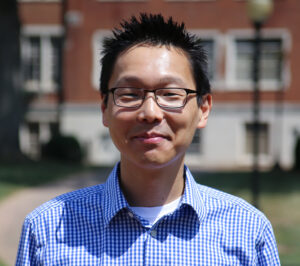
Are We “Two-thousand and Late”? The Perils of Teaching with Outdated Approaches in the Information Explosion Era
Recently, I was sharing with my children that one of the first purchases I made when moving to a new city or state was a map. In the not-so-distant past (circa 1995), obtaining a map was of utmost importance for daily travel to visit restaurants, stores, and especially the homes of new friends and colleagues. This need for a map diminished when directions became accessible online, but I still relied upon step-by-step printouts from MapQuest in the days before smartphones. For the entire duration of my children’s lifetimes, which is roughly a decade, the notion of traveling with maps or printouts has been obsolete. Directions to and from anywhere are available at our fingertips. When we are driving to an unfamiliar location, my children are accustomed to instructions emanating from an automated voice on a mobile phone, not the crinkling sounds of a human peering at a paper map. When my children begin driving in a few years, I do not anticipate teaching them to read maps in the same way my parents taught me a generation ago. Rather, I will likely provide reminders about devices being sufficiently charged and issue warnings about the perils of multitasking on the road.
Technological developments over the past twenty years have transformed our access to information in a myriad of areas, ranging from shopping for household items to researching academic subjects. This information explosion has altered nearly every facet of our lives, but I wonder if theological education is one arena, at least in some classrooms, where the teaching and learning operates as if we were still in the twentieth century. Although much of my journey as a masters-level seminary student coincided with the advent of the information explosion, my experience entailed a lot of rote memorization with a heavy emphasis on comprehension of content, such as the ability to regurgitate information, often in dreaded blue books, about significant persons, dates, ideas, and movements, without notes. I was also required to analyze this content, but only after I demonstrated an adequate grasp of the foundational data. For example, it was important that I knew from memory the chronological order and specific dates of Martin Luther’s theological writings before I offered commentary on the import, impact, and differences between Luther’s three treatises in 1520.
My teaching as an historian of Christianity in the United States has eschewed any requirement of rote memorization. I believe it remains valuable to possess a clear trajectory of religious developments and some historical facts from memory, but I also recognize how the information explosion has made it possible to shift my pedagogical priorities toward method, praxis, and application. Access to historical facts is no longer confined to visiting physical libraries or purchasing books because this information is readily available online. But because history is a contested endeavor pursued from multiple perspectives and sometimes with malicious agendas, my aims are to meticulously cover historiography and trace with my students how history gets made. This includes comparisons of written histories utilizing different sources, such as the different presentations of world missions from the viewpoints of white missionaries from the United States and local Christian leaders across Africa, Asia, and Latin America.
I don’t want my teaching to be “two-thousand and late,” which is a colloquialism derived from a song by the Black Eyes Peas criticizing modes of thinking or doing that are hopelessly outdated. I cannot teach with some of the same approaches as my predecessors and former professors. I am grateful for the ways they sparked my curiosity and stirred my mind, but my students and I are learning today amid an explosion of information, misinformation, and disinformation. A pedagogy centered on lecturing about historical content for three hours every week and then mandating that my students reproduce this content from memory feels as archaic as printing out directions from MapQuest. It is more exciting and effective to interpret, analyze, and apply the historical content together with my students. In studying the history and legacy of U.S. participation in world missions, we are grappling with the pernicious results of colonization and evangelization alongside the courageous and anti-imperial witness of some individual missionaries. After my students graduate, they may not remember when or where exactly these missionaries served overseas, but they can immediately recall this information on their phones and computers. What I want them to remember, as they plan short-term mission trips in their congregations, is our deep engagement with the moral questions and immoral failings of world missions, including Jomo Kenyatta’s observation: “When the missionaries came to Africa, they had the Bible and we had the land. They said, ‘Let us pray.’ We closed our eyes. When we opened them, we had the Bible and they had the land.” Because I don’t want my students to repeat the mistakes of the past in their ministries, I must continuously adapt and revise my teaching to create more opportunities to connect historical content with contextual praxis.
Leave a Reply